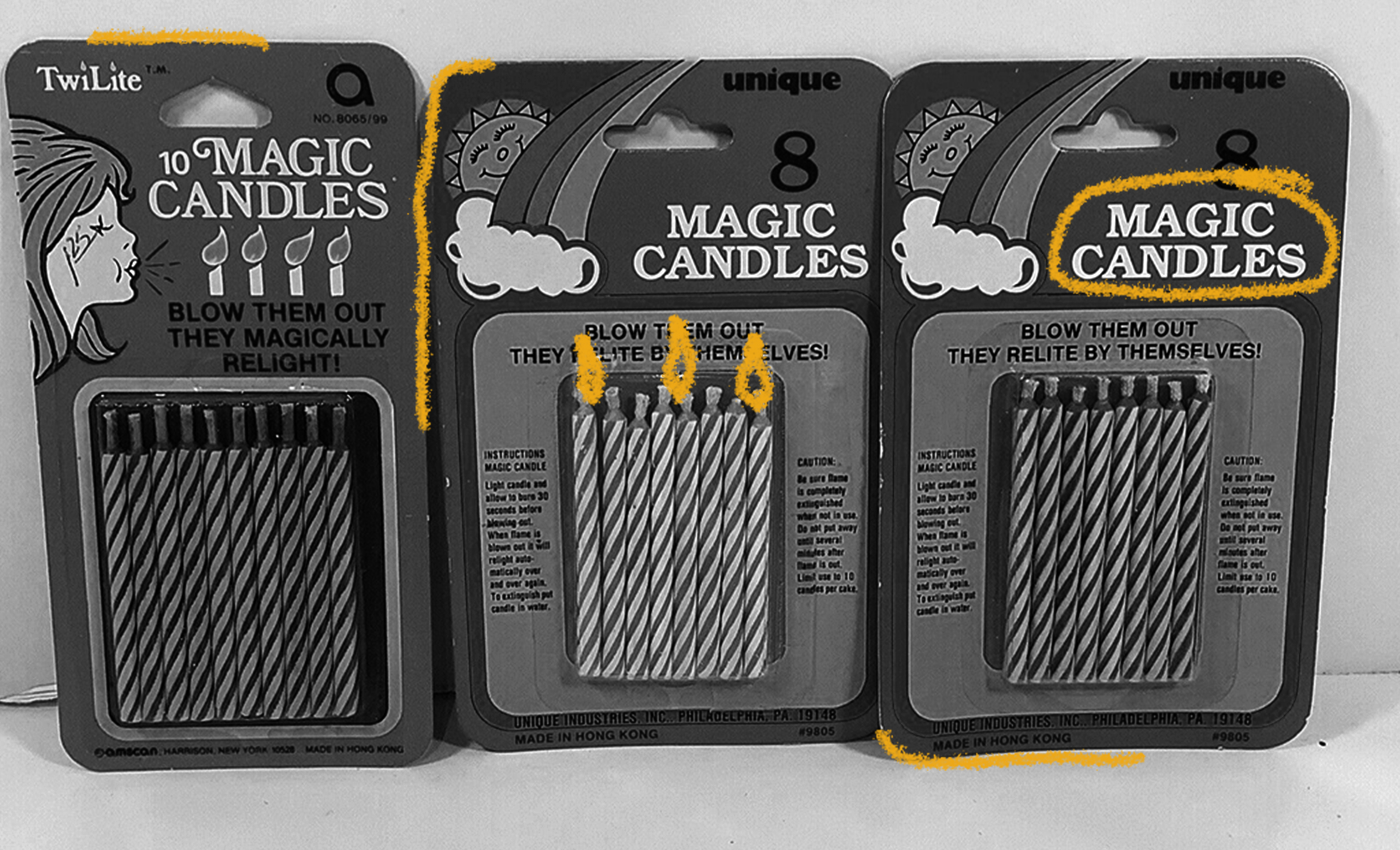It’s tough to identify a single inventor of trick candles, but we do know that several relevant patents have been filed around the world. In 1983, inventor Toshio Takahashi filed a patent in Japan for a “Self-Ignited Candle.” In 2003, inventor Earl M. Stenger filed a U.S. patent for a wind-resistant candle made with wick fibers that contain magnesium. Regardless of how they came to be, trick candles are often a staple at birthday parties. But how do they work? Magnesium powder is incorporated into the candle’s wick. Magnesium has a low ignition point, so after the initial flame is blown out, the hot embers ignite the magnesium powder, which produces tiny sparks and in turn ignites vaporized paraffin hydrocarbons, relighting the wick. Because these candles can be a fire hazard, they’ve been banned in Canada since 1977, but remain legal in the United States and are often seen at birthday parties and other celebrations.

Your go-to guide for weird history facts
Subscribe to the FREE daily email that makes learning about history fun.


